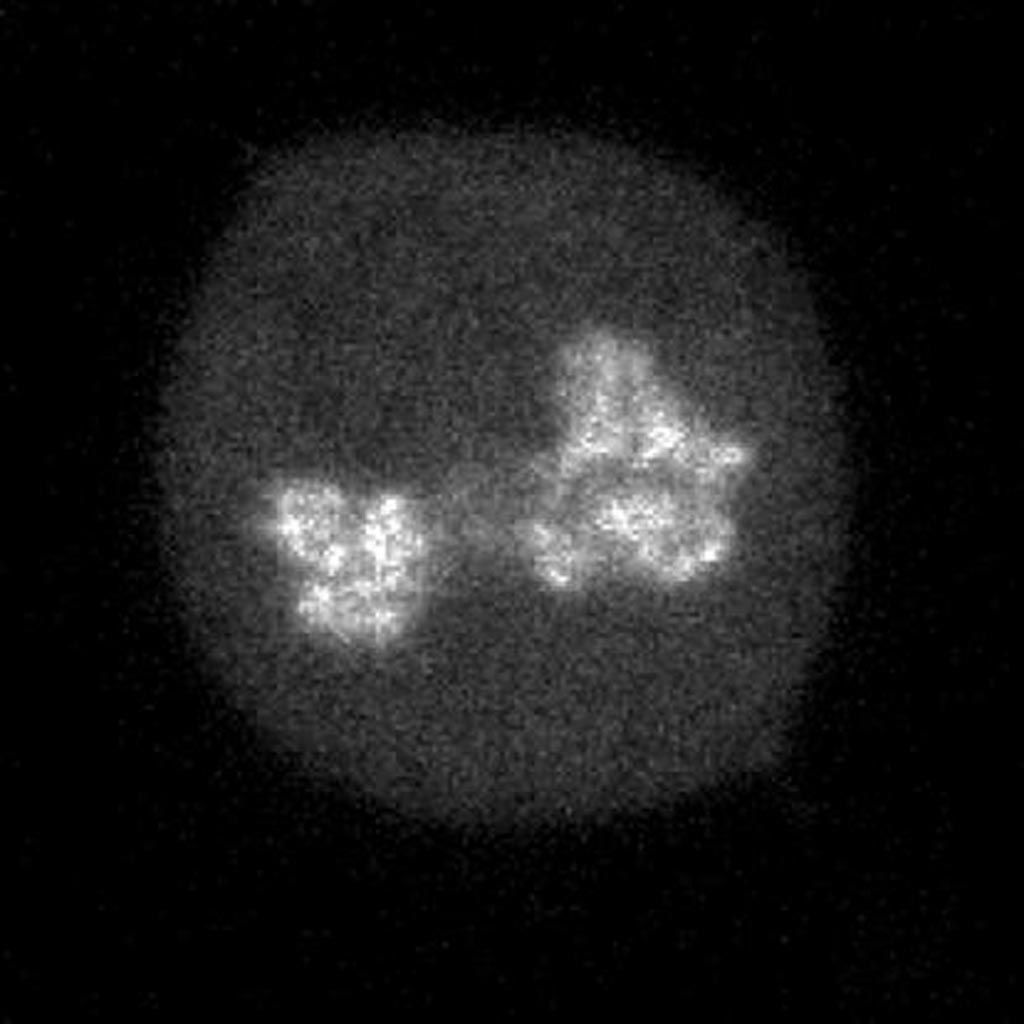Interaction of Transcription Factors Can Predict DNA Binding
By LabMedica International staff writers
Posted on 13 Feb 2019
A team of Swiss stem cell researchers has demonstrated that by observing the binding of transcription factors to mitotic chromosomes it is possible to predict how they will bind non-specifically to DNA.Posted on 13 Feb 2019
A transcription factor (TF) (or sequence-specific DNA-binding factor) is a protein that controls the rate of transcription of genetic information from DNA to messenger RNA, by binding to a specific DNA sequence. The function of TFs is to regulate genes in order to make sure that they are expressed in the right cell at the right time and in the right amount throughout the life of the cell and the organism.

Image: A photomicrograph showing the CDX2 transcription factor localized to mitotic chromosomes (Photo courtesy of Dr. David Suter, Ecole Polytechnique Fédérale de Lausanne).
TFs regulate gene expression by binding regulatory sequences of target genes. TF ability to occupy specific genomic sites depends on their nuclear concentration, their ability to search the genome, and the chromatin environment of their binding sites. How TFs maximize search efficiency for specific sites is not well understood. To clarify this matter, investigators at Ecole Polytechnique Fédérale de Lausanne (Switzerland) analyzed 501 TFs in mouse embryonic stem cells by determining how they bound to mitotic chromosomes, a property that has been linked to the ability of TFs to associate with DNA in a non-specific manner.
For this study, the investigators combined quantitative measurements of mitotic chromosome binding (MCB), TF mobility measurements by fluorescence recovery after photobleaching, single molecule imaging of DNA binding, and mapping of TF binding and chromatin accessibility.
Results published in the January 30, 2019, online edition of the journal Nature Communications revealed that TFs associating to mitotic chromosomes were enriched in DNA-rich compartments in interphase and displayed slower mobility in interphase and mitosis. MCB correlated with interphase TF properties such as sub-nuclear localization, mobility, and with large differences in TF ability to occupy specific genomic sites. Based on these findings, the investigators proposed that the co-localization of TFs with mitotic chromosomes was a proxy for TF non-specific DNA binding properties, which regulated TF search efficiency for their specific binding sites and thereby their impact on chromatin accessibility.
"Transcription factors differ largely in their ability to scan the genome to find their specific binding sites, and these differences can be predicted by simply looking at how much they bind to mitotic chromosomes," said senior author Dr. David M. Suter, assistant professor of stem cell research at Ecole Polytechnique Fédérale de Lausanne. "Transcription factors that are the most efficient in searching the genome could be able to drive broad changes in gene expression patterns even when expressed at low concentrations, and can therefore be particularly important for cell fate decision processes."
Related Links:
Ecole Polytechnique Fédérale de Lausanne













